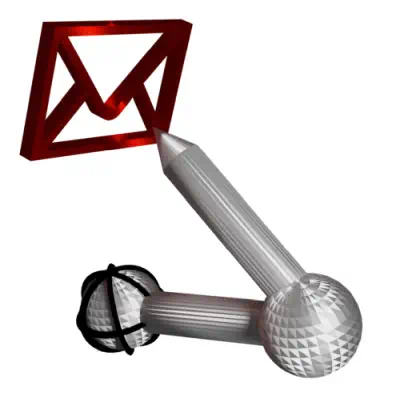AyMINE – Technical documentation
Modules
Integration with ERP Abra Gen
 Task, project & quality management
Task, project & quality management
Manager approval with the task report
Why some data can't be deleted
GDPR and record of qualifications
Qualification of user or contact
Right to Manage Qualifications
Adminitration of areas, projects, calendars
Failure Analysis for an Individual Property of a Component or Process
FMEA – Probability of Detection
FMEA – Probability of Occurrence
 Task, project & quality management
Task, project & quality management
Administration of the Task Management Module
System rights for the task management module
Improvements and Preventive Measures
Methodology and Quality Management systems
What makes up the methodology / SMJ
Problems, tickets and their management
Collaborative Resolution of Multiple Problems
Customer Service Response Generation
Incident and Quality Issue Management
Objects affected by the problem
Problems, Incidents, Helpdesk Tickets
Return project plan by baseline
Sample tasks and methodologies of the area
Effect of the task on the right to modify the attached object
The person responsible for the task
Working procedure – task definition
Management of responsibilities - RACI Matrix
Objects related to the task pattern
 Contacts and directories module (CRM)
Contacts and directories module (CRM)
Address book list and management
Directory or people and companies
Order overview for customer groups
 Contacts and directories module (CRM)
Contacts and directories module (CRM)
System Permissions and CRM Module Settings
Send bulk messages in compliance with GDPR
How to correctly forget a person's details
Unsubscribe and set preferences
for bulk mail
 Web management and automation
Web management and automation
Receiving a message from the web
Human resources
Personalistics – User Permissions and roles
Human Resources module security
Manage department / division data
Overview of Personnel Information for pracov# Employment Contract
Synchronizing staff and system users
 Products, assets and sales
Products, assets and sales
Creating and processing orders
Manage the Property & Business module
Why are the Quality criteria usefull
Managing Finance
Metrics and Measurements
Work summaries from generated data
Technical Modules
Sabre plugin module
Enterprise Architect connector
Database link to Enterprise Architect database
Enterprise Architect connector
System Modules
 The AyMINE Framework Module
The AyMINE Framework Module
AyMINE — Tips for Mobile Usage
Configure how your system looks and works
Gestures and Keyboard Shortcuts
More about how the system works
Private notes and tags for objects
Overview of Modules and Record Types
Role Groups and Teams
AyMINE uses groups to organize users into groups that match the organization's breakdown and allow for joint management.
Users and other groups are assigned to groups. This allows me to divide groups into properties
What applies to all groups
- A group gives users the rights assigned to it
- A group inherits the rights of a group from the groups it is assigned to
- A user who is in a group is simultaneously in the group to which the group it is assigned. (A group assignment is thus a transiently inheritable property.)
Group Types
Although user groups don't seem to be very different at first glance, there are significant differences between them
 General Group
General Group
A group without a specific specification is created by administrators to set up the rights to use the application
 Team
Team
A team is a group that has a manager. By being a group leader, a manager gains rights over team members. Specific rights may depend on the system modules:
- can assign tasks to members of his team,
- can move tasks between members,
Teams should correspond to the organizational structure of the company. But a team can also be a project team, i.e. created only temporarily.
 Role
Role
A role determines a person's job status. It does not in itself give a member new rights, but is used in the system:
- standard tasks are assigned to a role,
- decisions are directed to roles,
- roles are shown in the user's description.
Note
The importance of assigning a role/group to a repository
Roles and groups determine the rights to manipulate objects in the system. By binding a group to an object repository – a project, group, and so on – you create the right to insert messages into the repository.
Note: The role to project/area link is created automatically from the settings of the area and is not followed for roles. The settings for roles are by default just done from the repositories. However, the link is also used to allow saving messages (or other objects) to areas and this is controlled by the link that is set here.
When does it make sense to use the function with an area:
- Disconnect an area from a project that is terminated – people will still have the right to view the project, but will not be able to add more messages to it.
- By attaching an area to a group, you can allow people to post messages to the area who otherwise cannot post to the area.
Roles do not form a hierarchy
There are many hierarchical objects in AyMINE. Information, tasks, and much else can "disintegrate" into partial information, tasks, etc. This creates a tree from more general to more detailed. System groups and roles, however, are not hierarchical. They have ancestors and successors, they can have more of both – mainly ancestors.
The sense of the ancestor is also not that it is a more general group, but that the group inherits rights from it. And it can inherit them from more other groups. This is not the logic of the tree, nor are the links.
Because roles do not form a hierarchy, they do not have a tree view in the list.

